Let’s say that you had the Delorean from Back to the Future at your disposal and could travel back to the time when you were 16. You’ll remember that the antagonist from the series, Biff, did just that in the second movie, bringing along a sports almanac that he gave his young self, allowing him to become extremely wealthy by betting on sporting events where he knew the outcome. Let’s say that you couldn’t get a hold of a sports almanac or a copy of the Wall Street Journal stock tables before you left, so all that you could give your younger self was advice on how he/she should handle his/her money. What kinds of advice would you give? Here are some things that I’d pass along to my younger self.
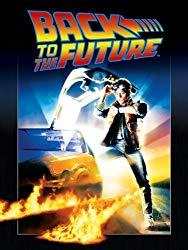
(Note, if you click on a link in this post and buy something from Amazon (even if you buy something different from where the link takes you), The Small Investor will receive a small commission from your purchase. This costs you nothing extra and is the way that we at The Small Investor are repaid for our hard work, bringing you this great content. It is a win-win for both of us since it keeps great advice coming to you (for free) and helps put food on the table for us. If you don’t want to buy something from Amazon or buy a book, how about at least telling your friends and family about our website as a great place to learn about investing and personal finance. Thanks!)
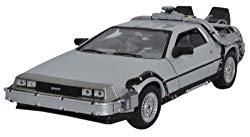
Learn How to Manage Your Cash Flow
There is a lot about Robert Kiyosaki’s financial advice that I disagree with, but one thing he absolutely gets right is his fundamental idea of setting up the cash flow of the wealthy. This involves finding a little bit of money from each paycheck to invest, then allowing the money from those investments to be used to buy more assets. Doing this sets up a compounding short-circuit that causes your wealth to grow. This starts slowly at first, maybe adding ten or twenty dollars to your income per year when you first start investing, but over 20 or 30 years, your investment income will exceed your work income.
While I have been investing from the age of 12 onwards, I wish that I had read Rich Dad Poor Dad: What the Rich Teach Their Kids About Money That the Poor and Middle Class Do Not!
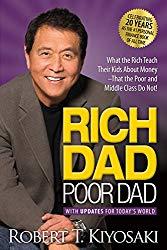
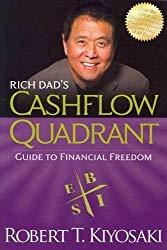
Rich Dad Poor Dad: What the Rich Teach Their Kids About Money That the Poor and Middle Class Do Not!
Become a serious investor
I spent a lot of time floundering about in investing. I did well enough, if you consider well enough making money, but I didn’t do as well as I should have. When I was right, I didn’t make as big a profit as I should have. I tried to time the markets, jumping in and out, and sat on the sidelines during some pretty decent moves upwards. I bought stock in companies just based on the price movements without really caring about the fundamentals of the company.
After about 25 years, I developed a strategy I call serious investing. I liken serious investing to using a big net where what most people do would be likened to rod fishing. One is about catching fish, the other is about having a good time. Serious investing isn’t as fun and you don’t have as many great stories for parties, but it makes money. In a nutshell, it is about finding great companies that have lots of room to grow, building up large positions, and then staying invested for the long-term, giving the companies enough time to grow and realize their potentials. If you want to learn more about becoming a serious investor, pick up a copy of

Learn from Benjamin Graham about Value Investing
There are two fundamental investing schemes that actually work: value investing and momentum investing. Because I’ve become a serious investor and do not trade in and out of stocks, momentum investing is of little use to me. I still use value investing, however, when deciding which stock to buy at a particular moment.
You see, I gather together a watch list of stocks that have the characteristics I want: steady earnings growth, dividend growth, and price increases, reasonable debt, room to expand and grow, good return on equity, etc…. Whenever I have money to invest, I then go back to my watch list and decide which of the stocks in my watch list is the best bargain at that time. Unless I already have too much of that stock already, I’ll add shares. This gives me a little extra return and helps me avoid buying into companies that are great long-term choices but poor short-term performers because they’ve already gone up in price to where they will likely be over the next several years. To learn about value investing, check out Benjamin Graham’s classic book on value investing, The Intelligent Investor: The Definitive Book on Value Investing.
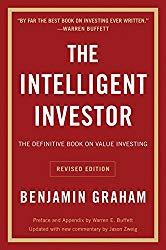
When I was finishing college, the Ford Explorer I had bought was causing us troubles, so we traded it in on a new Jeep Cherokee. I still remember driving it at 55 mph for the first 500 miles to break the engine in, which seemed to take forever driving around the California interstate system where everyone else was doing 75. When I moved for my first job I started listening to Dave Ramsey. It was then that I realized that I was “doing stupid with zeros on it.” Here I was, like practically everyone fresh out of college starting a new job, driving a shiny new car with payments. Seven years worth of payments in my case.
Through his radio show and books like The Total Money Makeover

The Total Money Makeover: Classic Edition: A Proven Plan for Financial Fitness
After learning what I fool I was being, I paid the car off over a period of about a year so at least I wasn’t paying interest on my stupidity. I have kept the same car, now almost 20 years old. Over the last four years, it went from a value of around $2000 to $1500, meaning I’m only paying about $125 per year in depreciation to drive this car.
One reason often given for buying new cars is to get the warranty. Newer cars, however, aren’t the pieces of junk rolling off the assembly lines in the 1970s. Many cars will go for 200,000 miles, 300,000 miles, or more and never require more than basic maintenance and repairs. Last year I put in a new headliner and seat belt (costing about $300) and put in a new alternator for about $600. So I may pay somewhere between $600 and $1000 in a given year for repairs, but it’s saving me $4000 per year in depreciation. That provides me with cash flow to invest. I could even cut the costs down further if I did the repairs myself, but I’m at the point where it is better economically to pay someone else to do car repairs while I focus on my career.
Quit fooling around with investing
One of the biggest mistakes I made early on was the amount of money I was investing in each company. Normally I would buy 100 shares of a company. If I made a $1000 profit on it, I would sell and take the profit. I would have a dozen or more sales listed on my tax returns each year as a result of this fast selling. This was before I read JD Spooner’s book, Do You Want To Make Money Or Would You Rather Fool Around ?
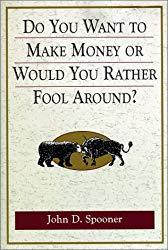
Do You Want To Make Money Or Would You Rather Fool Around ?
Last year I had about two stock sales on my taxes. This is because now I do two things. The first is hold positions that are doing well and let them continue to grow. This has to do with the kind of stocks I choose (long-term growth companies). This also allows my profits to be reinvested and continue to grow, rather than be taxed all along the way since you only pay taxes on capital gains when you sell and realize the gains – not when you hold onto them and only have paper profits.
The second thing that I do is buy large positions, which is the key piece of advice I got from Spooner’s book. Rather than buying 100 shares as I did in the past, I’ll build up a position of 500 to 1000 shares. As a result, when a stock goes up $30 per share, rather than making $3,000, I might make $30,000. Because having such winners is fairly rare, having larger positions allows me to take full advantage when I do.
Of course, large positions have their downsides. If you invest $20,000 in a $20 stock rather than $2,000 and it gets cut in half, you’ll have a loss of $10,000 rather than $1,000. I’ve had just this thing happen. Some of my biggest losers include the deepwater drilling company, ESV, down about 95% from where I bought in during the oil boom, and Canadian uranium producer, Cameco, down about 50%. I offset this risk by:
- Buying several different companies in different industries to reduce the effects of a downturn in any one sector of the economy,
- Limiting positions to about 5% of my total portfolio value, cutting positions back when they become bigger than this.
So my losses in ESV and Cameco have been more than offset by gains in American Tower and BJ’s Restaurants, International. The beauty of investing is that the most you can lose in a $20 stock is $20 per share, but the amount you can gain is unlimited. Combining concentrated positions with long-term investing – so that I don’t need to be correct right now, just sometime over the next ten years or more – has made all of the difference.
So, those are my lessons for my younger self. Hopefully, there are some people out there who are 16 now who will take some of these lessons to heart. What are some things you’d tell your younger self about money?
Have a burning investing question you’d like answered? Please send to [email protected] or leave in a comment.
Follow on Twitter to get news about new articles. @SmallIvy_SI
Disclaimer: This blog is not meant to give financial planning or tax advice. It gives general information on investment strategy, picking stocks, and generally managing money to build wealth. It is not a solicitation to buy or sell stocks or any security. Financial planning advice should be sought from a certified financial planner, which the author is not. Tax advice should be sought from a CPA. All investments involve risk and the reader as urged to consider risks carefully and seek the advice of experts if needed before investing.
